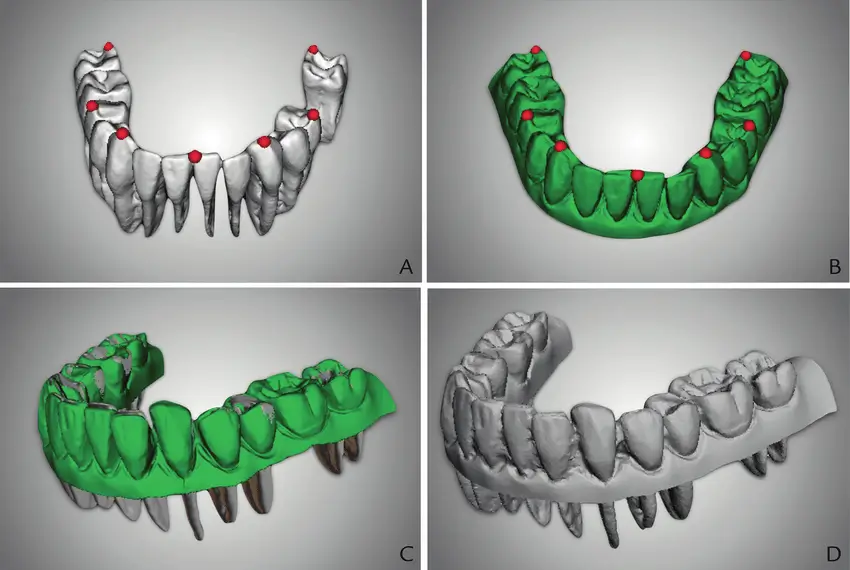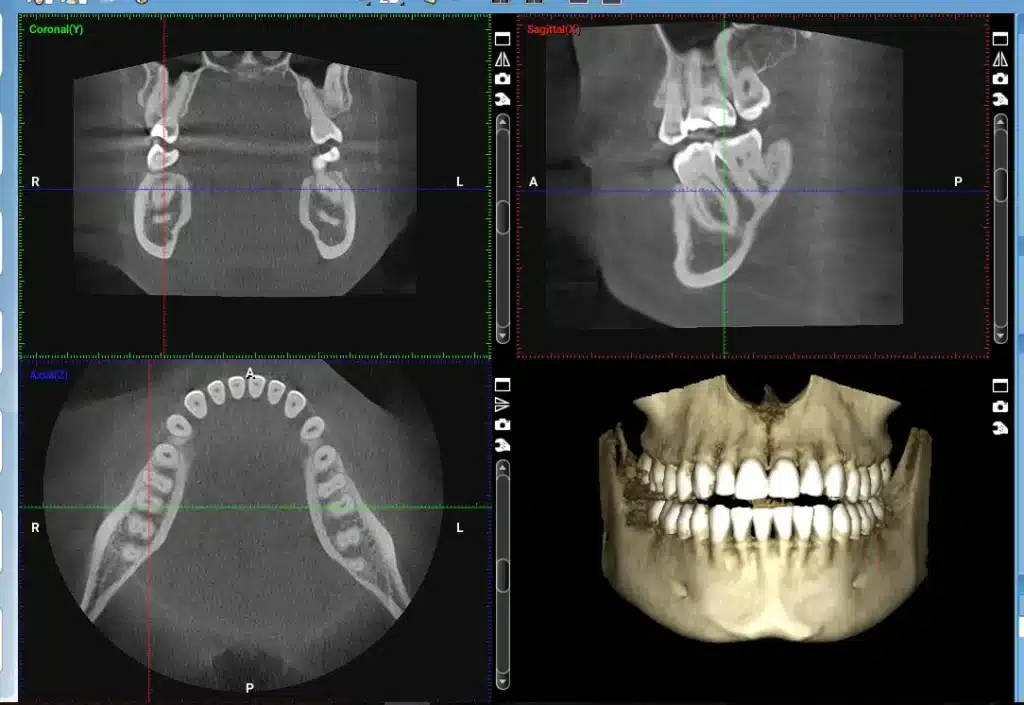Why Dental Imaging Accuracy Is Crucial Before Treatment
In modern dentistry, accurate imaging is no longer a luxury—it’s a necessity. Whether planning for implants, aligners, or full-mouth reconstructions, dentists rely on clear, detailed visuals to make critical decisions. Poor imaging can lead to failed implants, misaligned restorations, or unnoticed pathology. That’s why the conversation around 3D dental scans versus CT scans for teeth is gaining momentum. Both technologies serve different purposes, but which one delivers the best results when precision matters?
Understanding the Role of a CT Scan in Dental Procedures
A CT Scan for Teeth, specifically a Cone Beam Computed Tomography (CBCT), provides three-dimensional images of the teeth, jawbone, sinuses, and surrounding structures. It’s commonly used before surgeries such as dental implants, extractions near nerves, or complex bone grafts. Unlike traditional X-rays, a CT Scan for Teeth allows for a detailed view of bone density, nerve positioning, and root orientation, making it a cornerstone in advanced diagnostics.
However, one of its downsides is radiation exposure. While CBCT uses less radiation than medical CTs, it’s still higher than an intraoral scan. For that reason, it’s typically reserved for more involved procedures rather than routine imaging read more.

What a 3D Intraoral Scan Offers in Modern Dentistry
A 3D intraoral scan is a non-invasive method of capturing the shape and contour of teeth, gums, and bite alignment. Using a handheld digital scanner, dentists create precise 3D models of the mouth in real time. These scans are used extensively in restorative work, orthodontics, and cosmetic planning.
The advantages? Zero radiation, quick capture time, and exceptional detail of surface anatomy. When it comes to crowns, veneers, aligners, and even full-arch prosthetics, 3D dental scans offer a fast and patient-friendly solution.
But they do have limitations. Intraoral scanners do not capture internal structures like bone density or nerve pathways. Therefore, they are unsuitable for surgical planning or diagnostics requiring internal anatomical analysis.
Key Differences Between CT and 3D Scanning
Both tools are indispensable—but for different reasons.
- CT scans visualize bone and internal anatomy with depth.
- 3D intraoral scans capture soft tissue and surface details with remarkable clarity.
For complex treatments like implant surgery or sinus lifts, CT scans are the gold standard. For prosthetic fittings, smile designs, or clear aligners, intraoral scans win in comfort and efficiency. Many modern clinics now integrate both for complete diagnostics—merging anatomical accuracy with surface detail to create highly personalized treatment plans.
Which Is More Accurate for Dental Planning?
Accuracy depends on the objective. If your goal is to plan bone-related procedures such as implant placement or extractions, then a CT scan for teeth offers superior anatomical insight. On the other hand, when the focus is prosthetic design, crown margins, or orthodontic simulations, 3D dental scans are more accurate in capturing detail on the enamel, bite, and gingival contour.
So, rather than thinking of them as competitors, they function best when used together—each compensating for what the other lacks.
When Should Each Scan Be Used?
Use a CT scan when:
- Assessing bone volume and density
- Locating nerves or sinus cavities
- Evaluating jaw alignment for surgical planning
Use a 3D intraoral scan when:
- Designing crowns, bridges, or veneers
- Creating digital impressions for clear aligners
- Monitoring orthodontic progress
Modern digital dentistry thrives when these tools are combined to create a fully guided workflow.

How Combined Imaging Improves Patient Outcomes
Clinics that merge both technologies see fewer complications, better surgical precision, and faster recovery times. With CT imaging guiding the bone-level work, and intraoral scans driving soft tissue and prosthetic design, dental teams can create seamless plans that are both functional and aesthetic. This integration also reduces chair time, minimizes errors, and enhances patient trust—especially when patients see their treatment plans visualized in 3D.
The Future of Digital Imaging in Dentistry
With AI integration, cloud-based planning, and even augmented reality overlays, the future of dental imaging is bright. As technology continues to advance, 3D dental scans and CT scans for teeth will not only coexist—they’ll become more interconnected. Systems will auto-align data from both scans to create a holistic model of the patient’s oral environment, taking diagnostics and planning to the next level.
How CT Imaging Detects Pathologies Before Symptoms Appear
One of the lesser-known strengths of CT scans for teeth is their ability to detect hidden infections, cysts, or tumors that don’t yet show symptoms. These scans can reveal abnormalities in the jawbone, sinuses, or root areas that would otherwise go unnoticed in a basic exam. Early detection of such issues can prevent complications during or after treatment and gives dental professionals time to adjust the treatment plan with minimal risk.
Can 3D Dental Scans Be Used for Bite Analysis?
Yes—and they’re becoming increasingly accurate. Advanced 3D intraoral scan systems now include occlusal mapping tools that analyze how teeth meet and where pressure points exist. This makes them a valuable aid in orthodontics and prosthodontics. By identifying irregular bite contacts early, dentists can design restorations or aligners that provide more balanced and long-lasting results.
What Patients Think: Comfort and Speed Compared
From the patient’s perspective, 3D dental scans are typically preferred for their speed and comfort. There are no bulky trays, no radiation, and the process takes under five minutes. In contrast, CT scans—while quick—can feel more clinical or intimidating due to the positioning and the nature of the machine. Still, when patients understand the purpose behind each scan and how it contributes to better results, most are open to both types being used.
Digital Workflow Integration: The Future of Full-Mouth Rehabilitation
Clinics offering fully digital workflows combine CT data, 3D scans, and CAD/CAM systems to streamline full-mouth treatments. From diagnosis to surgical guides to final restorations, each phase is coordinated digitally. This minimizes human error, enhances predictability, and often results in better-fitting prosthetics. As more dental teams adopt these tools, patient outcomes and overall satisfaction continue to improve read more.
